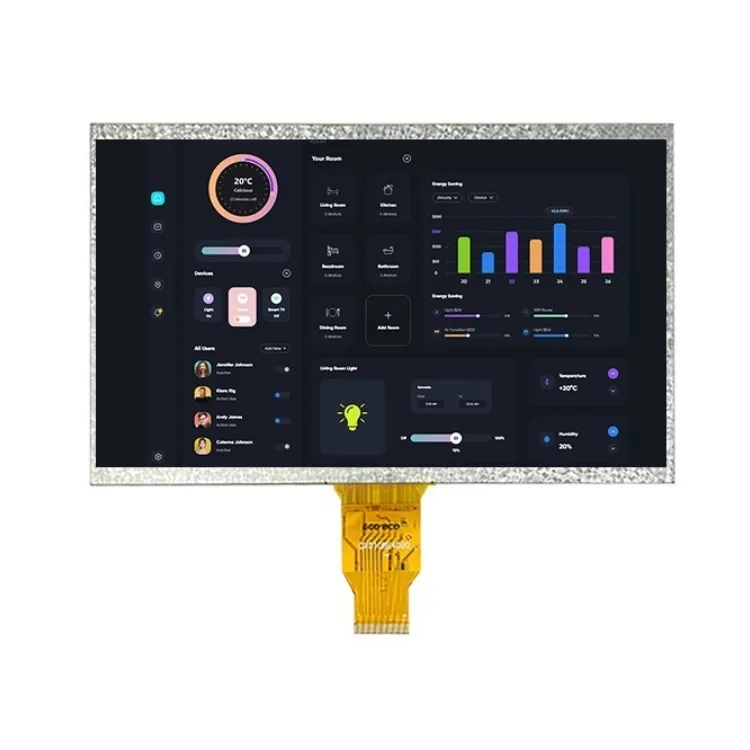TFT LCD vs. OLED and LED: Understanding the Key Differences
2024-11-20
Display technologies have revolutionized how we interact with digital devices, offering high-resolution visuals for a variety of applications. Among these technologies, TFT LCD, OLED, and LED displays are the most widely used. But how does a TFT LCD module differ from OLED and LED? Let’s explore these technologies and understand their unique features.
What Is a TFT LCD Module?
A TFT (Thin-Film Transistor) LCD (Liquid Crystal Display) module uses liquid crystals manipulated by electric currents to control light passage and create images. The thin-film transistors enhance control over each pixel, resulting in improved resolution and performance.
How Does TFT LCD Compare to OLED and LED?
1. Light Source:
- TFT LCD: Requires a backlight to illuminate the liquid crystals, which don’t emit light on their own.
- OLED (Organic Light Emitting Diode): Each pixel emits its own light, eliminating the need for a backlight.
- LED (Light Emitting Diode): Primarily refers to a type of backlit LCD, where LEDs replace traditional CCFL (cold cathode fluorescent lamp) backlights for better brightness and energy efficiency.
2. Color and Contrast:
- TFT LCD: Offers good color accuracy but struggles with deep blacks due to the constant backlight.
- OLED: Exceptional color vibrancy and perfect blacks, as individual pixels can turn off completely.
- LED: Similar to TFT LCD in color performance but offers better brightness with LED backlighting.
3. Power Efficiency:
- TFT LCD: Consumes more power due to the backlight.
- OLED: More energy-efficient for darker content but less efficient with bright, full-screen displays.
- LED: Generally more power-efficient than TFT LCD but less efficient than OLED for dynamic content.
4. Thickness and Flexibility:
- TFT LCD: Bulkier due to the backlight unit.
- OLED: Ultra-thin and flexible, making it ideal for foldable and curved screens.
- LED: Compact, but not as slim as OLED.
5. Lifespan and Durability:
- TFT LCD: Durable and long-lasting, with no risk of burn-in.
- OLED: Prone to burn-in over time but offers a shorter lifespan for organic materials.
- LED: Longer-lasting than OLED and comparable to TFT LCD in durability.
Where Are These Technologies Used?
- TFT LCD: Common in laptops, monitors, automotive displays, and industrial equipment where durability and cost are priorities.
- OLED: Found in premium smartphones, TVs, and wearable devices due to their superior color and thin design.
- LED: Frequently used in televisions, digital signage, and outdoor displays due to their brightness and energy efficiency.
Each display technology has its strengths and ideal use cases. TFT LCD modules offer a balance between cost and performance, making them suitable for a wide range of applications. While OLED excels in image quality and design flexibility, and LED shines in brightness and energy efficiency, understanding these differences helps you choose the right display for your needs.



